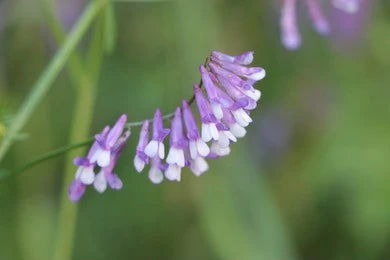Middle Eastern native goat's rue (Galega officinalis) is a herbaceous plant. nonetheless, has now become a citizen of Western Asia and Europe. Goat's rue has a long history of use as a diuretic and has been described as a plant with significant therapeutic efficacy. It is commonly grown as a feed crop, an ornamental, a bee plant, and a green manure. It is extensively grown as a livestock feed.
Scientific Classification
Kingdom: Plantae
Phylum: Angiosperms
Class: Eudicots
Order: Fabales
Family: Fabaceae (Leguminosae)
Subfamily: Faboideae (Papilionoideae)
Tribe: Galegeae
Genus: Galega
Species: Galega officinalis
Other names - galega, goat's-rue, French lilac, Italian Fitch, and professor-weed.
The temperate climates, notably those in Europe, are characterized by the presence of goat's rue. It is a perennial herb with summer blossoms that grows abundantly in grasslands, swamps, and along riverbanks. In many regions of the world, it is also considered to be an invasive weed. It can grow as tall as one to five meters. It has a glabrous stem. The complex leaves include 6 to 8 tiny leaflets with lance-shaped tips. The flowers are formed like butterflies. The blossom might be white, pink, or blue in hue. The lengthy seed pod explodes when it is ready, dispersing the seeds all over the place. The plant releases an unpleasant stench when bruised. The term "goat's rue" may have originated for this reason.
Parts Used
Dried floral and aerial components. The optimum time to collect flowers is from July through September. Then, the dried flowers are pulverized. This is utilized in powders, infusions, or tinctures.
Chemical Constituents
Guanidine, Flavones, Kaempferol, Quercetin, Galegine, Hydroxygalegine
Therapeutic Effects
- Goat's rue's abundant guanidine concentration has the ability to reduce blood sugar levels and improve insulin sensitivity. As a result, type 2 diabetes mellitus is treated with it in addition to other methods. Goat's rue's chromium content contributes to this effect as well.
- Clinical studies have shown that goat's rue can help people lose weight by decreasing hunger.
- Additionally indicated for gastrointestinal problems, goat's rue has been shown to ease chronic constipation.
- In terms of fluid retention, goat's rue is a fantastic diuretic. It also acts as an anti-inflammatory.
- Additionally, goat's rue is antibacterial. With bacterial illnesses, it works best. Goat's rue is a botanical tonic used in medieval folk medicine in Europe to treat worms, snake bites, and bubonic plague.
- The herb goat's rue is used as a blood-purifying tonic.
- When combined with other herbs, goat's rue can preserve the liver while stimulating the pancreas and adrenal glands.
- Additionally, goat's rue has the ability to prevent platelet aggregation.
- In the traditional medical system, goat's rue is also employed as a natural remedy for the treatment of tuberculosis.
- Research is being done on goat's rue's ability to fight cancer. It is proposed that goat's rue can successfully combat cancer.
- There are references in the past to the use of goat's rue as a tonic for typhoid illnesses. Additionally, it is stated that goat's rue-dried flowers are put to boiling infusion and consumed to increase perspiration during fevers. The diaphoretic characteristics of goat's rue.
- In the Middle Ages, tired feet were soaked in goat's infusion.
Goat's Rue & Lactating Mothers
Can lactating mothers take goat's rue without risk? Clinical trials and research are still being done on this issue. According to studies, goat's rue can function as a galactagogue and is non-toxic when administered in dry form. This plant has been shown to help nursing mothers produce more breast milk. A goat's rue can also accumulate and promote the formation of breast tissue.
Safety Profile
Goat's rue has consistently demonstrated pharmacological interactions with anticoagulants, diabetic medications, and iron absorption in the body. A goat's rue has long been thought to be very advantageous for lactation. Clinical trials are still being conducted to determine the safety profile of goat's rue during pregnancy and lactation.
Fresh goat's rue is regarded as being deadly. It should therefore only be used after complete drying.
Preparations containing goat's rue should only be taken as directed by a doctor and in recommended dosages. Self-medication and overdosing have been shown to have detrimental outcomes. It could lead to:
- Muscular weakness
- Headache
The right dosage of this medication depends on a person's age, disease state, and overall health.
Classical Dosage
2 gms in an Infusion.
The usage of goat's rue in bleeding situations worsens the issue. The blood clotting process may be slowed by goat's rue.

